A troop is a small unit of cavalry or some police forces.
Contents
Troop may also refer to:
A troop is a small unit of cavalry or some police forces.
Troop may also refer to:

A Scout is a child, usually 10–18 years of age, participating in the worldwide Scouting movement. Because of the large age and development span, many Scouting associations have split this age group into a junior and a senior section. Scouts are organized into troops averaging 20–30 Scouts under the guidance of one or more Scout Leaders or Scoutmasters. Troops subdivide into patrols of about 6–8 Scouts and engage in outdoor and special interest activities. Troops may affiliate with local, national, and international organizations. Some national Scouting associations have special interest programs such as Air Scouts, Sea Scouts, outdoor high adventure, Scouting bands, and rider Scouts. In the USA there was around 6 million scouts in 2011.
Stormtrooper or storm trooper may refer to:
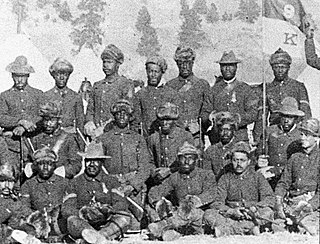
A troop is a military sub-subunit, originally a small formation of cavalry, subordinate to a squadron. In many armies a troop is the equivalent element to the infantry section or platoon. Exceptions are the US Cavalry and the King's Troop Royal Horse Artillery where a troop is a subunit comparable to an infantry company or artillery battery. Historically the remainder of the Royal Horse Artillery used the term troop in the same manner but they eventually aligned with the rest of the Royal Regiment of Artillery in referring to troops as subordinate to artillery batteries.

The 7th Cavalry Regiment is a United States Army cavalry regiment formed in 1866. Its official nickname is "Garryowen", after the Irish air "Garryowen" that was adopted as its march tune. The regiment participated in some of the largest battles of the American Indian Wars, including its famous defeat at the Battle of the Little Bighorn, where its commander Lieutenant Colonel George Armstrong Custer was killed. The regiment also committed the Wounded Knee Massacre, where more than 250 men, women and children of the Lakota were killed.

The 2nd Cavalry Regiment, also known as the Second Dragoons, is an active Stryker infantry and cavalry regiment of the United States Army. The Second Cavalry Regiment is a unit of the United States Army Europe and Africa, with its garrison at the Rose Barracks in Vilseck, Germany. It can trace its lineage back to the early part of the 19th century.
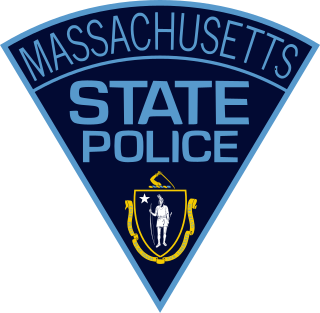
The Massachusetts State Police (MSP) is an agency of the Commonwealth of Massachusetts' Executive Office of Public Safety and Security, responsible for law enforcement and vehicle regulation across the state. As of 2024, it has 2,330 sworn troopers and 611 civilian support staff for a total of 2,941 personnel, making it the largest law enforcement agency in New England. The MSP is headed by Interim Colonel Jack Mawn.
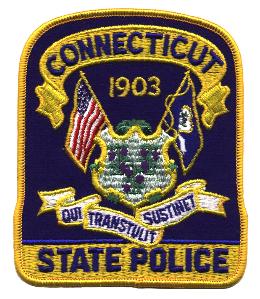
The Connecticut State Police (CSP) is the state police and highway patrol of the U.S. state of Connecticut, responsible for statewide traffic regulation and law enforcement, especially in areas not served by municipal police. It is a division of the Connecticut Department of Emergency Services and Public Protection. The CSP currently has about 875 troopers as of June 28, 2022 and is headquartered in Middletown, Connecticut. The Connecticut State Police is also responsible for protecting the Governor of Connecticut, Lieutenant Governor of Connecticut, and their families.
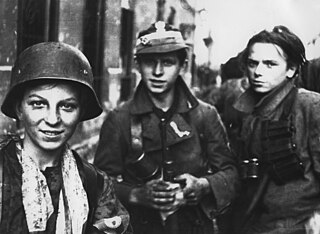
"Grey Ranks" was a codename for the underground paramilitary Polish Scouting Association during World War II.
Shock troop might refer to:

The 3rd Cavalry Regiment, formerly 3rd Armored Cavalry Regiment is a regiment of the United States Army currently stationed at Fort Cavazos, Texas.
Scouting and Guiding in mainland China was reported as banned with the establishment of the People's Republic of China (PRC) by the Communist Party since 1949. Instead, the Young Pioneers of China and the Communist Youth League, led by the Communist Party, have become the dominant youth organization in mainland China for younger and older youth, respectively. However, China now has multiple and originally separate Scouting activities within its borders. In 2004, the Scout Club of Hainan (海南童子军俱乐部), borrowing heavily from Scouting in terms of emblems, uniforms and activities, was founded in Hainan Province; it is, however, not affiliated with worldwide Scouting. An attempt to organize a nationwide Scouting organization in Wuhan was ended by the government in 2004. The Scout Association of the People's Republic of China (中华人民共和国童军总会), founded in 2008 serves Venture Scouts in both genders as well as Rover Scouts. The Rover Explorer Service Association operate groups in China.

A Scout leader or Scouter generally refers to the trained adult leader of a Scout unit. The terms used vary from country to country, over time, and with the type of unit.
The Big Horned Sheepeater Indian War of 1879 was the last Indian war fought in the Pacific Northwest portion of the United States; it took place primarily in central Idaho. A high mountain band of approximately 300 Shoshone people, the Tukudeka were known as the "Big Horned" Game Hunters as Rocky Mountain sheep were a main staple of their food, clothing and tools. At the time, they were the last tribe living traditionally on the American Rocky Mountains. The Tukudeka became part of the Salmon Eater Shoshones after the war.
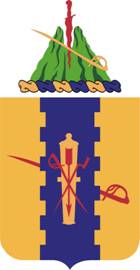
The 4th Cavalry Regiment is a United States Army cavalry regiment, whose lineage is traced back to the mid-19th century. It was one of the most effective units of the Army against American Indians on the Texas frontier. Today, the regiment exists as separate squadrons within the U.S. Army. Presently, 1st Squadron, 4th Cavalry and 5th Squadron, 4th Cavalry are parts of the 1st Infantry Division's 1st Brigade and 2nd Brigade combat teams, respectively. 1st Squadron, 4th Cavalry's official nickname is "Quarterhorse", which alludes to its "1/4 Cav" designation.The 3rd Squadron, 4th Cavalry, official nicknamed "Raiders," serves as part of the 25th Infantry Division. The 4th Squadron, 4th Cavalry officially was stood up on September 2009 at Fort Riley, Kansas as part of 1st Infantry Division. It was inactivated in October 2015. The 6th Squadron, 4th Cavalry served as part of the recently inactivated 3rd Brigade Combat Team, 1st Infantry Division, at Fort Knox, Kentucky.
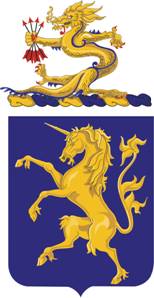
The 6th Cavalry is a regiment of the United States Army that began as a regiment of cavalry in the American Civil War. It currently is organized into aviation squadrons that are assigned to several different combat aviation brigades.
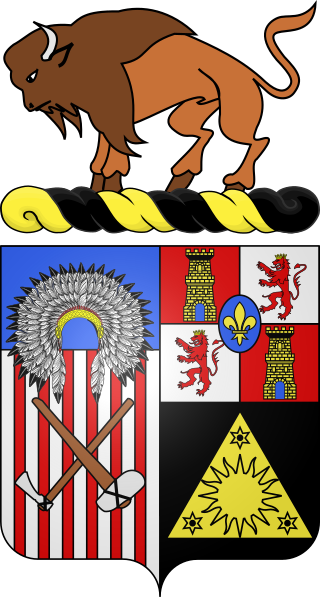
The 10th Cavalry Regiment is a unit of the United States Army. Formed as a segregated African-American unit, the 10th Cavalry was one of the original "Buffalo Soldier" regiments in the post–Civil War Regular Army. It served in combat during the Indian Wars in the western United States, the Spanish–American War in Cuba, Philippine–American War and Mexican Revolution. The regiment was trained as a combat unit but later relegated to non-combat duty and served in that capacity in World War II until its deactivation in 1944.
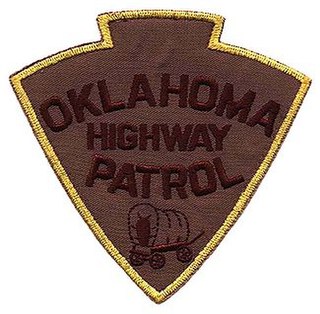
The Oklahoma Highway Patrol (OHP) is a major state law enforcement agency of the government of Oklahoma. A division of the Oklahoma Department of Public Safety, the OHP has traffic enforcement jurisdiction throughout the state. OHP was legislatively created on July 1, 1937, due to the growing problem of motor vehicle collisions, the expansion of highway systems, and the increase in criminal activities.
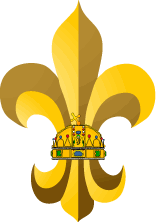
Külföldi Magyar Cserkészszövetség is a Scouts-in-Exile organization created for youth of Hungarian descent. Scouting makes it possible for young men and women to learn more about their Hungarian heritage, language and culture. The organization is dedicated to carrying out its obligations at four levels: God, their adopted countries, their fellow man and the Hungarian nation. The Boy Scout and Girl Scout units meet in conjunction with Hungarian weekend schools, which in many instances they also operate.

A Scout troop is a term adopted into use with Boy Scouts, Girl Scouts and the Scout Movement to describe their basic units. The term troop echoes a group of mounted scouts in the military or an expedition and follows the terms cavalry, mounted infantry and mounted police use for organizational units.

Air Scouts are a branch of The Scout Association in the United Kingdom dedicated to flying and aeronautical activities such as air navigation, identification, flying and gliding. The branch were first formed in 1941 although air activities had been a part of the Scout programme in the UK since 1911. They can be located anywhere but are usually located within easy transport distance of an airfield.